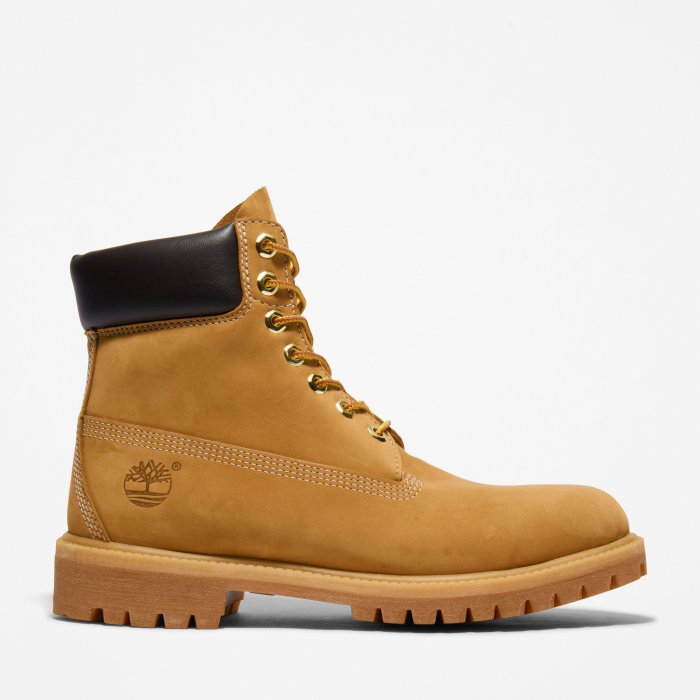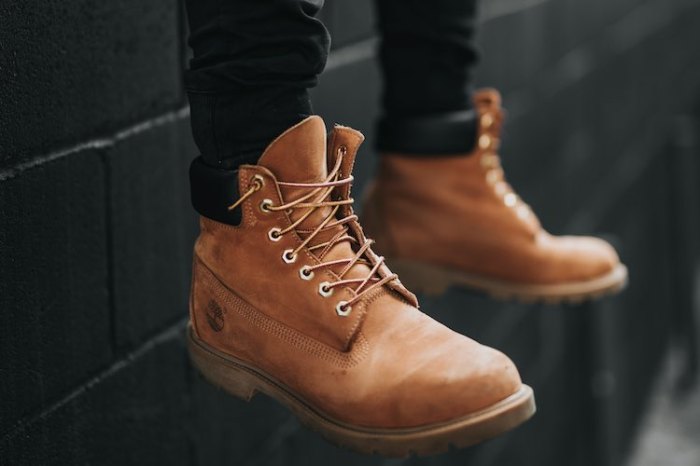Mens Fashion Timberland Boots A Style Guide

Timberland Boots: Mens Fashion Timberland Boots

Mens fashion timberland boots – Timberland boots have become iconic footwear, synonymous with durability and rugged style. Their journey from a specialized work boot to a globally recognized fashion statement is a fascinating study in brand evolution and design adaptation. This exploration delves into the history of Timberland boots, charting their design changes and the shifting demographics that shaped their popularity.
Step up your style game with rugged Timberland boots, the perfect foundation for a confident look. Elevate your ensemble further with subtle yet sophisticated accessories, such as a stunning diamond ring – check out this amazing selection of mens fashion rings with diamonds to find the perfect piece. The right ring complements your boots, creating a powerful and polished image that reflects your success and individuality.
Timberland boots and a diamond ring: a winning combination for the modern man.
Timberland Boots: Early History and Original Design
The story begins in 1952 with the founding of the Abington Shoe Company in New Hampshire. However, the Timberland brand, as we know it, truly emerged in 1973 with the introduction of the iconic yellow boot. This original design, the “Yellow Boot,” was revolutionary for its time. Constructed with premium waterproof leather, it featured a durable rubber lug sole designed for superior traction and all-day comfort.
The boot’s practicality and rugged aesthetic appealed initially to a niche market: outdoor workers and enthusiasts needing dependable footwear for challenging conditions. The distinctive yellow color, a bold choice, quickly became a symbol of the brand itself.
Evolution of Timberland Boot Styles
Over the decades, Timberland has expanded its boot offerings significantly. While the yellow boot remains a cornerstone of the brand, numerous variations and new styles have emerged. Early innovations included incorporating Gore-Tex technology for enhanced waterproofing and breathability, catering to a wider range of outdoor activities. Later, the brand diversified into different materials, incorporating suede, nubuck, and even recycled materials, responding to evolving consumer preferences and sustainability concerns.
Design changes included variations in boot height, from classic 6-inch styles to shorter ankle boots and taller, more insulated models for extreme weather conditions. The introduction of various color options beyond the signature yellow further broadened the appeal.
Shifting Target Demographics and Design Impacts, Mens fashion timberland boots
Initially targeting a primarily male, outdoor-focused demographic, Timberland has gradually expanded its reach. The brand’s success in capturing a broader market is evident in its design diversification. The introduction of more fashion-forward styles, collaborations with designers, and the development of women’s and children’s lines demonstrate this shift. This evolution is reflected in the designs themselves; boots became sleeker, incorporating elements of contemporary fashion trends while maintaining the core values of durability and quality.
The incorporation of lighter materials and more refined silhouettes demonstrates this move toward a wider, more style-conscious consumer base.
Timeline of Significant Milestones in Timberland Boot Design
A chronological overview of key moments in Timberland’s boot design history:
| Year | Milestone | Description |
|---|---|---|
| 1973 | Launch of the Yellow Boot | The iconic yellow boot, featuring premium waterproof leather and a durable rubber sole, is introduced. |
| 1980s | Incorporation of Gore-Tex | Timberland boots begin incorporating Gore-Tex technology for improved waterproofing and breathability. |
| 1990s | Expansion of Styles and Colors | The brand expands its offerings beyond the yellow boot, introducing various styles, colors, and materials. |
| 2000s – Present | Focus on Sustainability and Fashion | Timberland incorporates sustainable materials and collaborates with designers to create more fashion-forward styles, targeting a broader demographic. |
Competitor Analysis

Timberland boots have carved a solid niche in the footwear market, but they aren’t alone. Several other brands offer similar styles, each with its own strengths and weaknesses. Understanding the competitive landscape is crucial to appreciating Timberland’s position and the choices available to consumers. This analysis compares Timberland with two prominent competitors: Red Wing and Dr. Martens.
Timberland, Red Wing, and Dr. Martens: A Feature Comparison
This table directly compares key aspects of Timberland, Red Wing, and Dr. Martens boots, highlighting their differences in design, materials, pricing, and target demographics. The information presented is based on general market observations and publicly available information on the brands’ products.
| Feature | Timberland | Red Wing | Dr. Martens |
|---|---|---|---|
| Design | Often features a classic, outdoorsy aesthetic; known for its yellow boot and variations thereof; generally more streamlined designs. | Emphasizes rugged, work-boot styling; incorporates heritage details and traditional construction methods; heavier, more robust designs. | Distinctive air-cushioned sole; iconic grooved edges; offers a wider range of styles, from classic work boots to more fashionable options. |
| Materials | Primarily uses leather (full-grain, nubuck), often with waterproof treatments; employs synthetic materials in some lines. | Known for its use of high-quality leather; frequently utilizes durable, long-lasting materials; some models feature leather soles. | Uses high-quality leather and durable synthetic materials; the iconic air-cushioned sole is a key feature. |
| Price Point | Mid-range to high-end; prices vary depending on the model and materials used. | Generally high-end; reflects the use of premium materials and traditional craftsmanship. | Mid-range to high-end; pricing varies greatly depending on the style and materials. |
| Target Audience | Appeals to a broad audience, including outdoor enthusiasts, casual wearers, and those seeking durable footwear. | Targets a more niche market, appealing to those who value quality craftsmanship, heritage styling, and durability. Often associated with tradespeople and those appreciating traditional workwear. | Caters to a diverse audience, including those who appreciate classic workwear, punk/alternative styles, and those seeking comfortable, durable footwear with a distinct look. |
Answers to Common Questions
Are Timberland boots waterproof?
Many Timberland boots are treated with waterproofing, but the level of waterproofing varies by model and material. Check the product description for specifics.
How do I break in my Timberland boots?
Wear your boots for short periods initially, gradually increasing wear time. Using boot stretchers or applying leather conditioner can also help.
What’s the difference between full-grain and nubuck leather?
Full-grain leather is the top layer of the hide, making it durable and strong. Nubuck is also full-grain but is sanded for a softer, suede-like texture.
How often should I clean my Timberland boots?
Clean your boots regularly, as needed, using appropriate cleaning products for the leather type. This will prevent dirt buildup and prolong their life.
